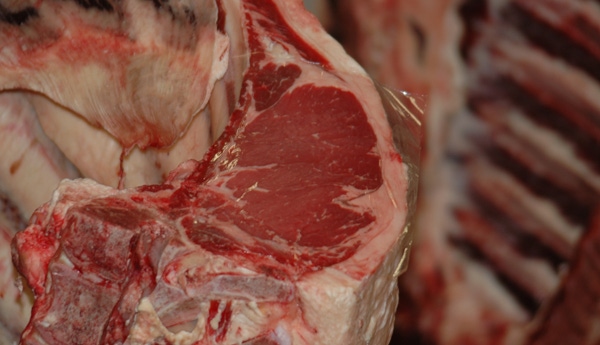September 25, 2014

The latest monthly USDA Cold Storage Report, like nearly every data set relative to supply, once again confirmed the tightness of overall beef supplies. The volume of beef in freezers on Aug. 31 was 20% less than last year, and overall red meat supplies in freezers were 7% less than the previous year. The one thing the industry is certain of is the supply situation now and for the foreseeable future. The main area of uncertainty remains beef demand.
The Livestock Marketing Information Center (LMIC) has produced a lot of tremendous information that has helped the industry do a better job of piecing together the demand puzzle. In fact, LMIC did an analysis of year-to-year changes in the value that the various primal cuts contribute to overall carcass value and it was quite revealing; it’s also good news for the industry.
LMIC looked at the primal and overall carcass values starting in 2006 through 2014. The most startling number was the overall value of the carcass, which is up over 60%. While that type of value increase might not shock other industries, it is essentially unprecedented in the beef industry. That’s especially true when you consider that the beginning point was not some anomaly year picked to make a point.
Of course, the loin is still the driver in carcass value, and it's grown in value over this time frame, but the other primal cuts have shown more growth in value as well. The industry has done a great job of adding value to the primal cuts that historically have been price limiters relative to overall value.
There are probably multiple factors driving these shifts, such as limitations to how high loin prices can go, and shifting consumer preferences based on changing prices. But a primary reason is the number of desirable cuts of beef that have been, and continue to be, developed from these more affordable primals.
The loin-to-carcass cutout value, according to LMIC, has decreased by 21%, while the short plate, chuck and brisket-to-cutout value ratios have increased by 22%, 25% and 38%, respectively, since 2006. The flank was up 7%, and the rib joined the loin as being the two cuts that were unable to keep up with the other primals, being down by 11%. You can read the LMIC report here.
I suppose to really understand the growth in value we would need to compare existing products like ground beef and New York strips from the various primals over the time span from 2006 to the present. We would then have to determine how much of the redistribution has been caused by consumers shifting to more affordable cuts, and how much is simply due to the new cuts coming to market.
It never ceases to amaze me when I go through a packing plant to see how little is wasted and how sophisticated the packing industry has become in identifying the various market segments and meeting those demands. That initiative and expertise have resulted in increased value for every beef carcass.
The opinions of Troy Marshall are not necessarily those of Penton and the Farm Progress Group.
You might also enjoy:
Weaning Beef Calves? Stop The Bawling!
Photo Tour: World's Largest Vertically Integrated Cattle Operation
Calf And Feeder Prices Widen Gap With Fed Cattle-Beef
55 Beef Cartoons From Leigh Rubin
Obama Administration Takes Aim At Antibiotic Resistance
4 Tips For Extending Fall And Winter Grazing
How To Prevent & Treat Pinkeye In Cattle
9 Things To Consider Before Culling A Cow
BEEF Vet Advice: When To Castrate Calves
About the Author(s)
You May Also Like



